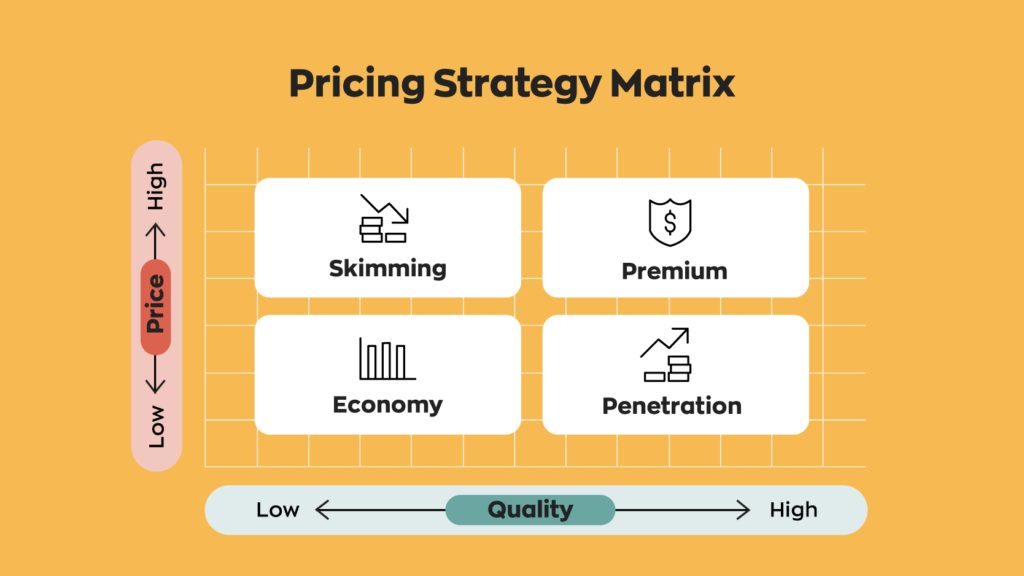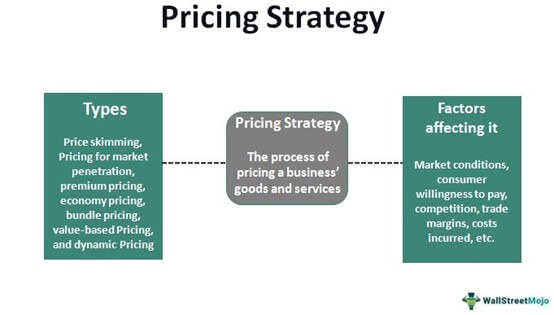How to Implement a Value-Based Pricing Strategy for Optimum Effect
How to Implement a Value-Based Pricing Strategy for Optimum Effect
Blog Article

Master Effective Prices Techniques to Make The Most Of Revenue
In the ever-evolving landscape of business, understanding reliable pricing strategies is necessary for companies intending to take full advantage of earnings. A nuanced understanding of pricing psychology can substantially affect client habits and purchasing decisions. Moreover, utilizing dynamic and value-based rates designs enables organizations to adjust to market variations and customer view. However, the complexity of rival analysis and continuous efficiency evaluation increases critical questions concerning the sustainability of these approaches. What specific methods can be applied to guarantee long-term success and client loyalty in this affordable atmosphere?
Recognizing Pricing Psychology
Comprehending pricing psychology is critical for businesses aiming to maximize their prices methods. This field checks out just how customers regard rates and exactly how these assumptions influence their getting decisions. Key concepts in rates psychology consist of the anchoring effect, where the preliminary rate offered offers as a reference point for customers, and the concept of price level of sensitivity, which differs amongst various customer sectors.
In addition, organizations can take advantage of the idea of viewed worth, where the regarded advantages of a product and services can warrant a greater cost factor. For example, costs prices can develop a mood of exclusivity, drawing in consumers that connect greater costs with premium quality. On the various other hand, mental prices, such as establishing a cost at $9.99 instead of $10, can dramatically impact consumer actions by making costs show up much more eye-catching.
Furthermore, scarcity and seriousness can improve the regarded value of products, motivating quicker acquiring choices. Recognizing these psychological triggers makes it possible for companies to formulate prices strategies that not just drive sales yet also foster client loyalty. Hence, grasping rates psychology is crucial for effective prices strategy formulation, resulting in improved earnings and market positioning.
Applying Value-Based Rates

First, conduct detailed market research study to determine the value vehicle drivers for your target audience. This can consist of functions, top quality, brand online reputation, and customer support. Next, sector your customers based upon their desire to pay and the worth they perceive. By doing so, you can tailor offerings and prices strategies to align with various sections.
Continuously keep an eye on market problems and customer responses to fine-tune your rates approach over time. By applying value-based rates, organizations can enhance profitability while promoting lasting client commitment.
Exploring Dynamic Prices Models
In today's quickly transforming market landscape, vibrant rates designs have become a powerful approach for services looking for to enhance profits and respond to changes popular. These models enable firms to readjust their costs in real-time based upon different aspects such as customer habits, market trends, and supply degrees. By leveraging data analytics and formulas, businesses can determine optimum prices factors that make the most of sales while staying affordable.
Dynamic prices can take various forms, including time-based rates, where prices rise and fall based upon time of day or period, and demand-based rates, which readjusts prices according to existing customer need. This versatility not just improves earnings but additionally improves consumer complete satisfaction by offering costs that mirror real-time market conditions.
Carrying out dynamic prices requires a durable technological facilities and a deep understanding of consumer sections. Clear interaction about prices changes can aid mitigate customer dissatisfaction and foster depend on, ultimately leading to continual productivity in an my review here affordable market.
Studying Competitor Pricing
Keeping an eye on competitor rates is necessary for services intending to keep an one-upmanship in their respective markets. By assessing competitors' rates methods, companies can determine market patterns, recognize consumer preferences, and readjust their pricing accordingly. This analysis involves event information on rivals' prices, advertising approaches, and item offerings to inform prices choices.
To properly analyze competitor prices, companies need to make use of various tools and strategies, such as price tracking software application, marketing Homepage research records, and customer responses. This data can expose how competitors position their services and products, enabling businesses to separate their offerings or embrace comparable methods to continue to be pertinent.
In addition, it is important to categorize rivals into indirect and straight competitors. Direct rivals supply comparable service or products, while indirect rivals may accomplish the very same client demand with different solutions. Recognizing the subtleties in between these groups will certainly make it possible for services to customize their rates methods much more effectively.
Eventually, continuous competitor pricing analysis is important for making educated prices decisions. It allows organizations to continue to be active in reaction to market shifts, ensuring they can take chances and alleviate dangers related to pricing techniques.
Reviewing Prices Efficiency
Comprehending how competitor pricing influences market characteristics brings about an all-natural emphasis on assessing prices efficiency within one's very own service. This assessment is crucial for identifying locations of strength and chances for renovation, eventually improving success.

Furthermore, performing regular rates audits can disclose discrepancies between anticipated and actual efficiency. This entails contrasting prices information across various sections and networks to recognize variances and identify patterns. Furthermore, integrating customer responses can offer insights right into perceived value versus real pricing, guaranteeing placement with market assumptions.
Lastly, leveraging data analytics tools can help with much deeper insights into pricing efficiency, allowing companies to make data-driven adjustments (Pricing Strategy). By continuously examining pricing performance, organizations can adapt to market modifications and enhance their techniques, guaranteeing sustained productivity in a competitive landscape
Verdict
By leveraging pricing psychology, businesses can enhance regarded worth and dressmaker prices to diverse client sectors. The fostering of dynamic and value-based pricing models promotes real-time adjustments based on demand and client willingness to pay.
Understanding rates psychology is vital for organizations intending to enhance their rates methods. Understanding these emotional triggers enables services to develop pricing techniques that not only drive sales yet also foster consumer loyalty. Thus, understanding pricing psychology is vital for efficient pricing technique formulation, leading to enhanced profitability and market positioning.
By examining rivals' rates strategies, business can determine market fads, recognize consumer preferences, and adjust their prices accordingly. By leveraging rates psychology, organizations can boost regarded worth and tailor rates to varied client sectors.
Report this page